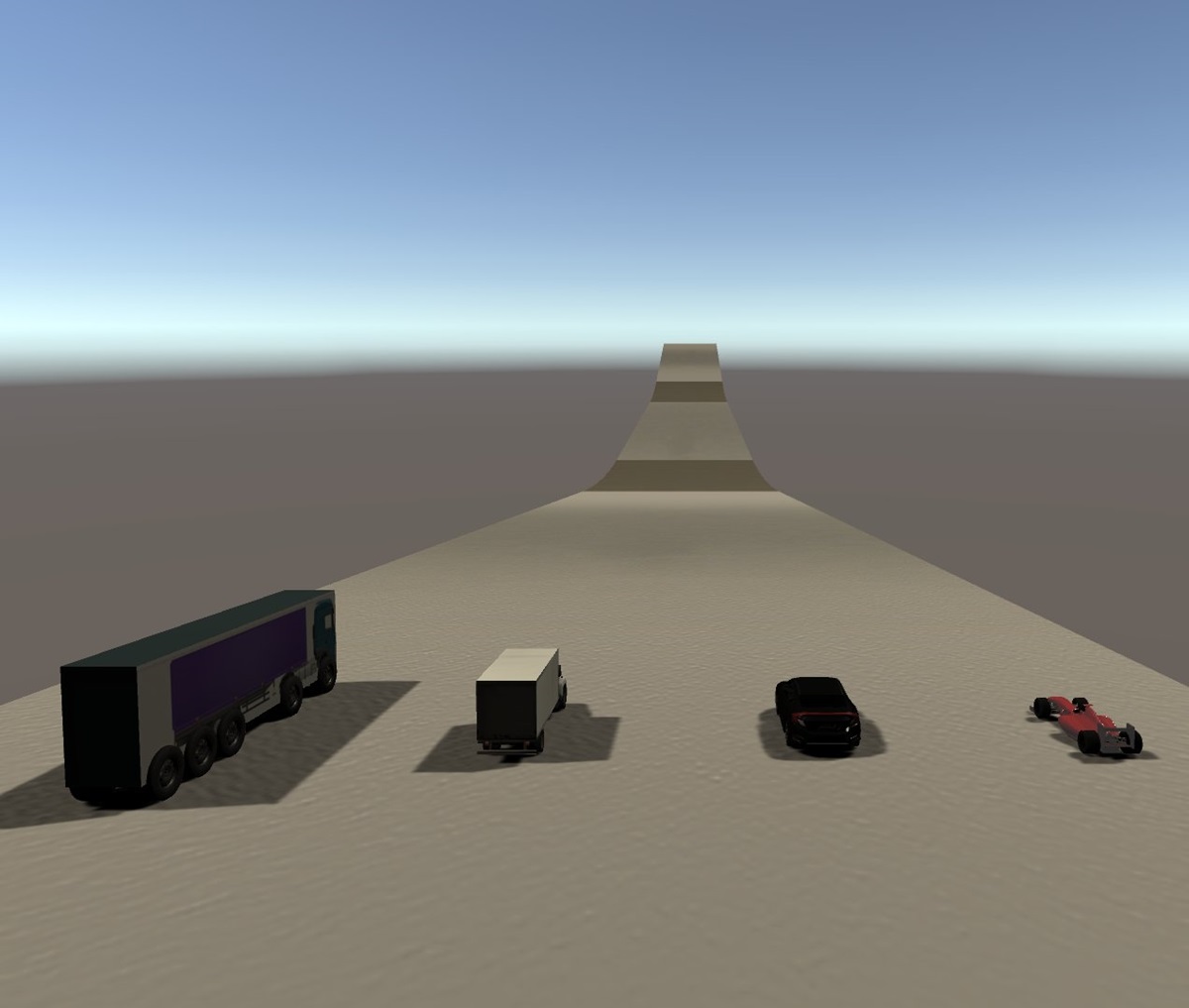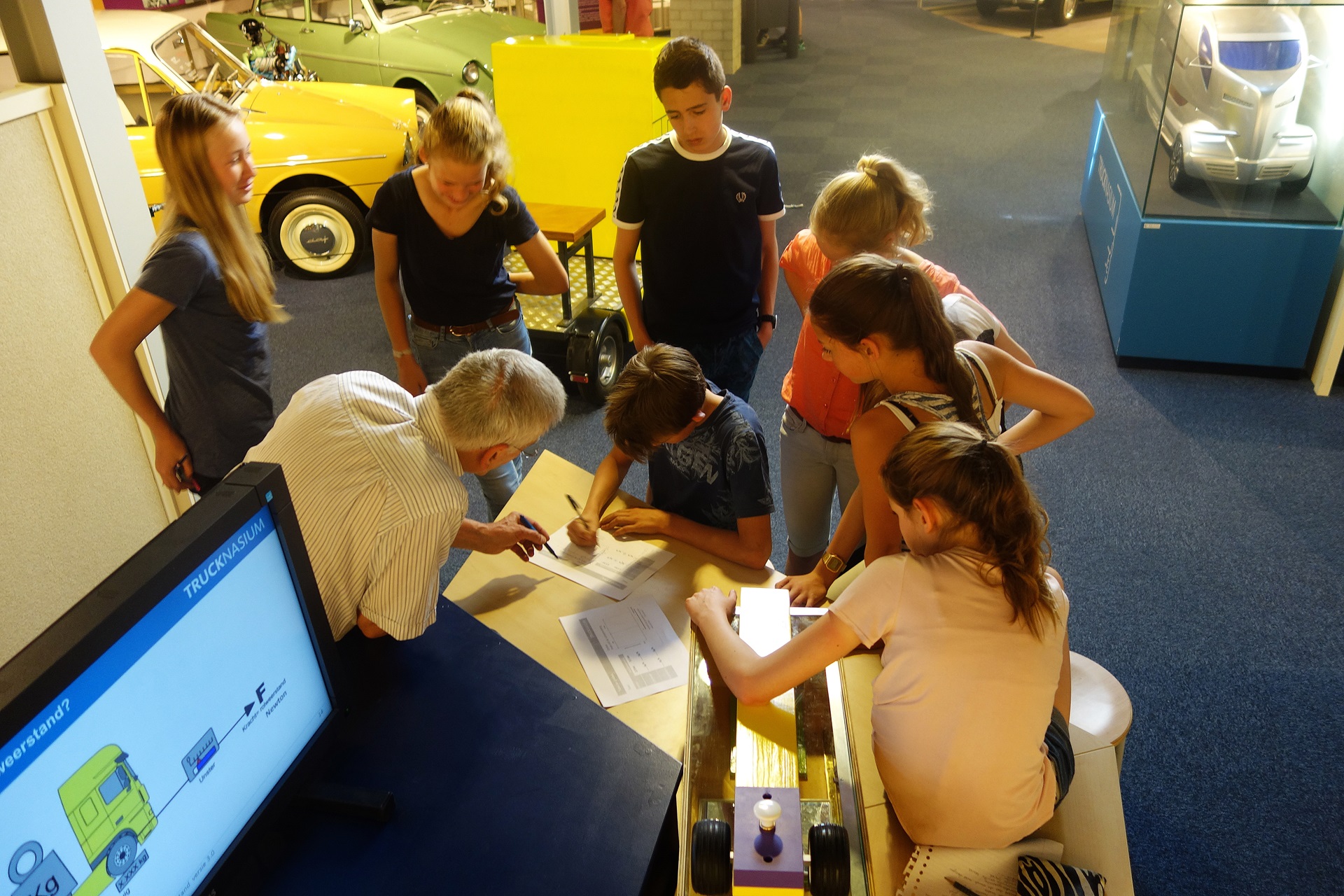
Educational programme
Trucknasium
Trucknasium offers an interesting curriculum about mobility, sustainability and road-safety for primary education group 7 and 8 (6th grade) and 7th and 8th grade students of VMBO (intermediate vocational education), HAVO (higher general secondary education) and VWO (preliminary scientific education).
On the agreed date, the class will visit the DAF Museum. There, the students will work in small groups under supervision. All lesson modules last 45 minutes, except for Composing a truck, Energy, Safety on the Road and Robotics (both half a day).
Modules
1. Composing a truck
In this new module you will learn how to work with a digital design programme. In the museum you will find out which are the important parts that together compose a truck. After this you will be able to digitally design a particular truck on your own.
The session Composing a truck has a duration of 3 hours.
Separate versions are available for primary and secondary education.
This session lasts 3 hours.
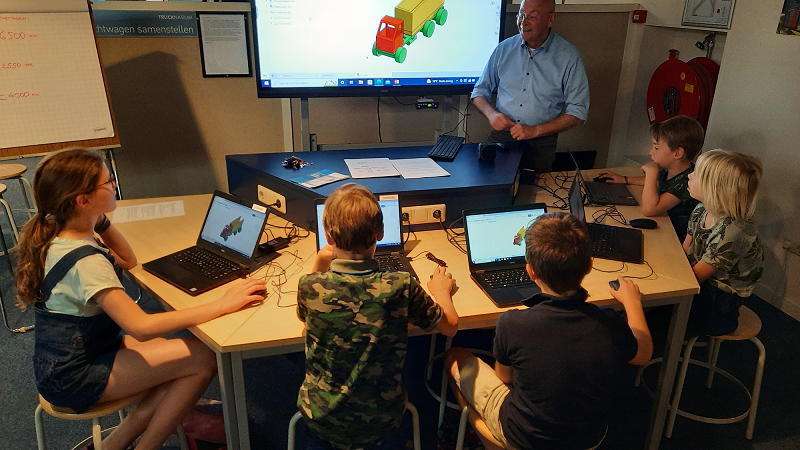
2. Power to Move
In this new module, you will experiment with various forces that set things in motion. We explore how these forces are applied through a journey from sailboats, windmills, and steam engines to combustion engines and modern electric motors. At the museum, you’ll discover how these principles are used in modes of transport such as passenger cars, trucks, and/or airplanes.
Target group: Primary school groups 7/8 and first-year secondary education students.
This session lasts 3 hours.

3. Energy: How do you go as far as possible on a full tank or battery?
In this module, students discover in an interactive and playful way how gravity, air resistance, and rolling resistance affect vehicles. These experiences help children understand how to reduce energy consumption in their own lives. The insights gained are applied to designing trucks and choosing the most efficient transport solutions.
The module includes hands-on experiments with rolling resistance test rigs, a real wind tunnel, a half-pipe, a truck simulation program, and the museum’s collection.
Target group: Primary school groups 7/8 and first-year secondary education student
This session lasts 3 hours.

4. Safety on the Road
Through assignments, demonstrations, and videos, students gain insight into many aspects of road safety. Museum-based activities teach how various vehicle technologies can improve the safety of passenger cars and trucks. Students sit in a real truck cabin to experience what a driver can and cannot see. They also get behind the wheel in a driving simulator to operate a truck. Finally, they load a scale model of a truck in a way that ensures it can drive safely.
Target group: Primary school groups 7/8 and first-year secondary education students.
This session lasts 3 hours.

5. Robotics
We live in the era of robots. In our robotics module the children will learn to assemble a vehicle from a sort of LEGO parts. After this they will programme the vehicle’s computer in a simple way.
As an alternative, more complex and challenging tasks may be programmed on pre-assembled vehicles.
A robotics session has a duration of 3 hours.
Target group: Primary school groups 7/8 and first-year secondary education students.
This session lasts 3 hours.
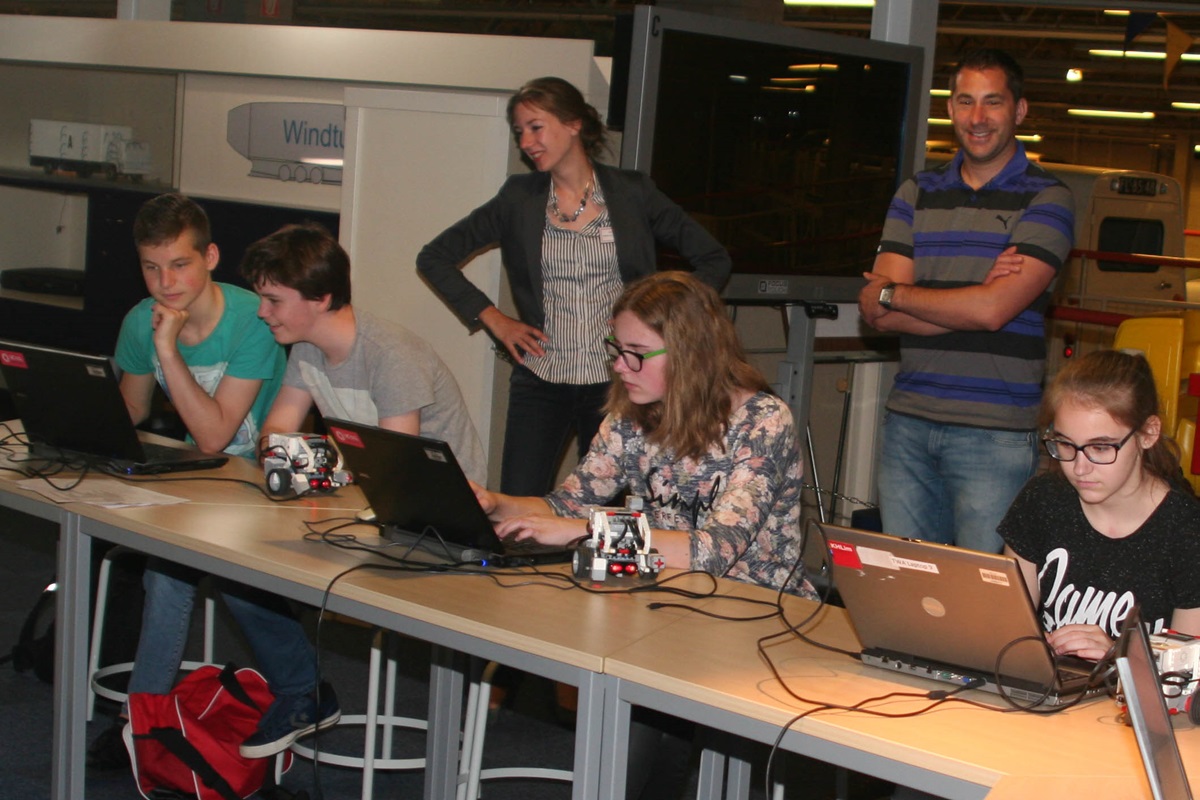
6. Measurement of rolling resistance
The easier a truck rolls on the road, the less fuel it will use. Quite logical, right? But how is it done, make a truck roll easier?
Just by inflating the tyres more, or are there other means? Experiment, measure and make the result visible in a graph. Besides, will trucks still roll in the future? Why not hover?
Target group: From second-year secondary education onwards.
This session lasts 45 minutes.

7. Measuring air resistance
Trucknasium has a real wind tunnel, in which the air resistance can be measured!
Compare the air resistance of an old-fashioned angular truck with that of a modern streamlined truck. What will the truck of tomorrow look like? The design of the external shape is becoming increasingly important. That is technology, too!
Target group: From second-year secondary education onwards.
This session lasts 45 minutes.
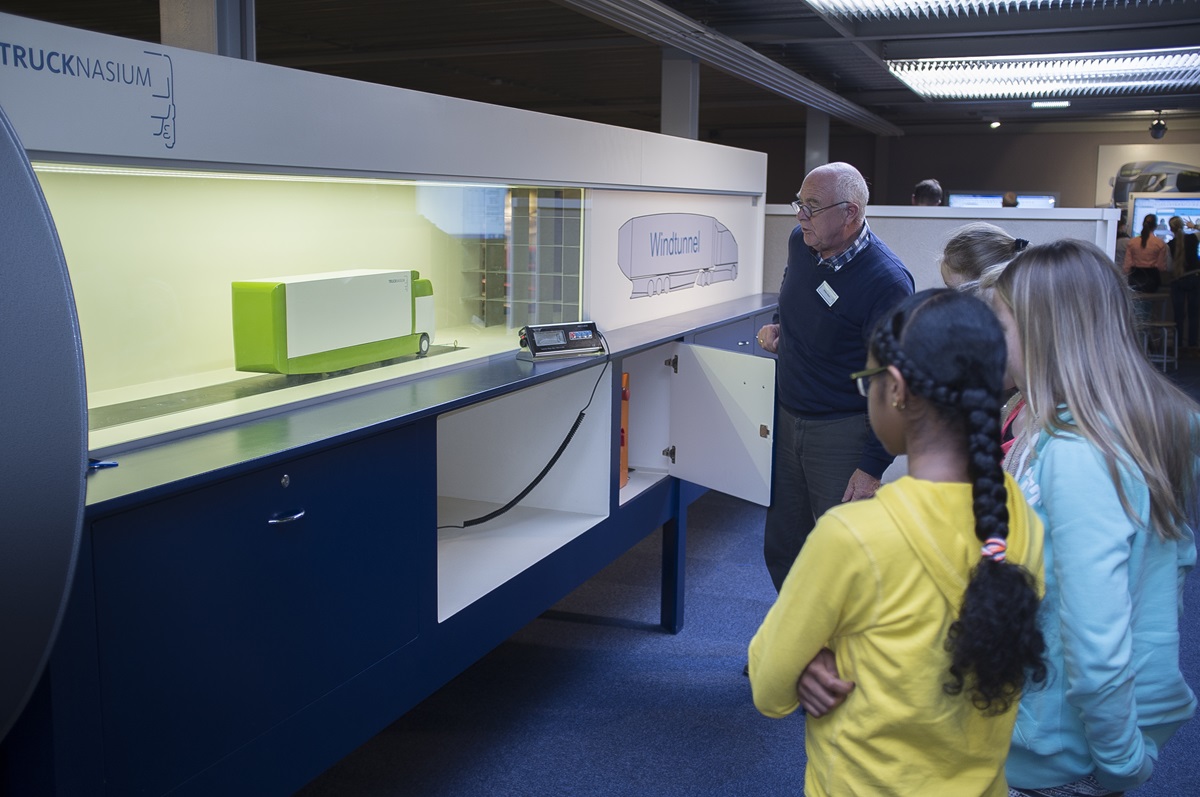
8. Loading and unloading
Transport of loads always involves risks. Safe and responsible loading, unloading and driving with loads is very important for any truck driver to prevent accidents and traffic congestion.
The same goes for all other road users, obviously. Therefore safety systems are essential. Which regulations apply to the driver’s job, actually? In the Trucknasium you will learn by loading and unloading a mini truck yourself. In this way you will soon find out how things go in practice.
Target group: From second-year secondary education onwards.
This session lasts 45 minutes.
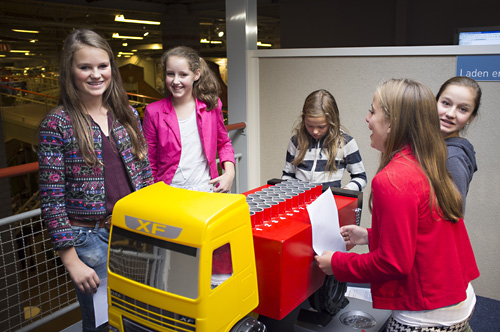
9. Road-Safety
Thanks in part to our great mobility we live in a prosperous and highly developed country. However, participating in road traffic always involves some risks.
More and more the driver is supported by high tech safety systems in order to take part in the ever denser traffic in the safest, most comfortable and most efficient way possible. Experience yourself how technology leads safety in the right direction.
Target group: From second-year secondary education onwards.
This session lasts 45 minutes.

10. CO₂ & Transport
By their emission of CO₂, passenger cars and trucks have a significant effect on the problem of climate change. Via various tests, videos and demonstrations discover the nature of CO₂, from which it arises and how it influences our climate.
But also how new technologies contribute to the reduction of CO₂. You are made familiar with environmental issues arising both before and after a vehicle has been filled up with fossil fuel, electricity of hydrogen.
Target group: From second-year secondary education onwards.
This session lasts 45 minutes.

11. Transport and energy
You investigate how transport can be done using energy as efficient as possible. The concept of energy is explained. You will conduct tests with vehicle models on a half-pipe track to find out the effect of rolling resistance and air resistance on the energy consumption. Teams compete in a simulation programme to configure a truck that performs best in respect to energy consumption.
Target group: From second-year secondary education onwards.
This session lasts 45 minutes.
